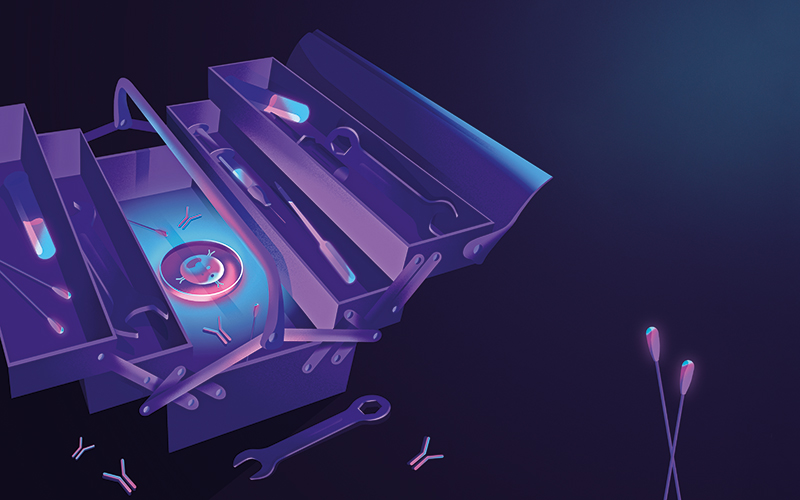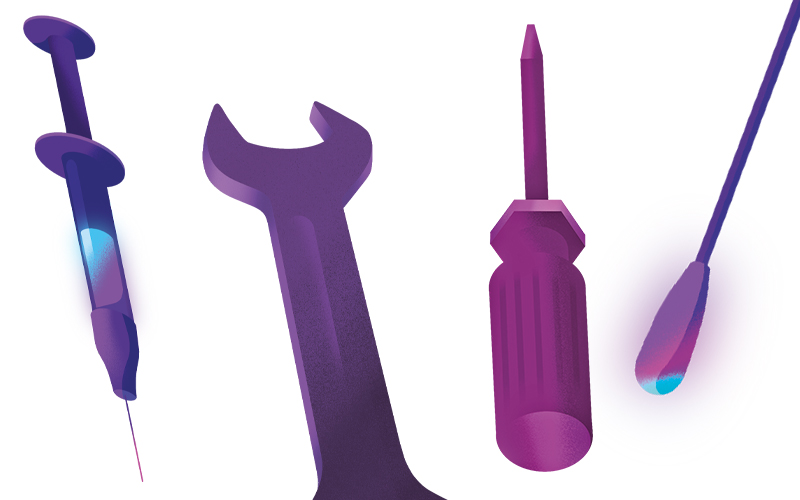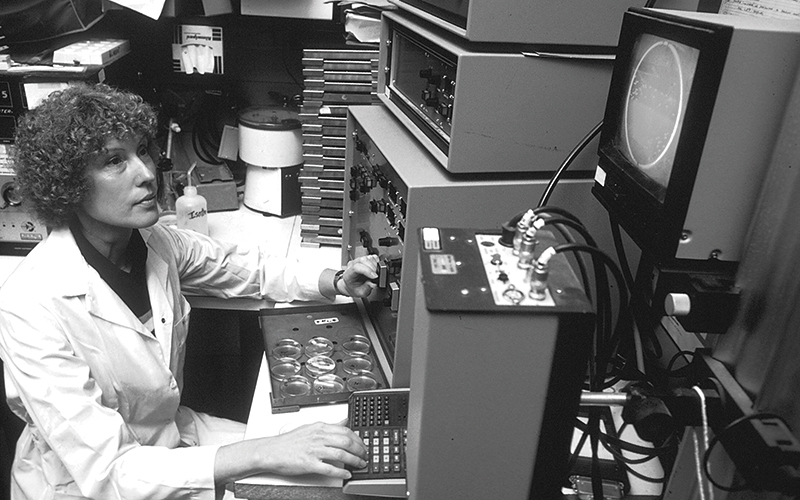The immunotherapy tool that ushered in a new era in cancer treatment options.

This month the Icahn School of Medicine at Mount Sinai in the US is awarding its Maria I. New International Prize for Biomedical Research to Dr Carl H. June. A pioneer in the field of cancer and HIV cellular therapy, this eminent immunologist is best known for his pivotal role in developing chimeric antigen receptor (CAR) T-cell therapy for cancer (see fact file on p.22).To put it simply, CARs are engineered synthetic receptors that work to redirect lymphocytes, most commonly T cells, to recognise and eliminate cells – such as cancer cells – that express a specific target antigen. While the technology has been maturing for decades, it is only in the last 10 years that treatment with CAR T-cells has achieved promising clinical results (see timeline overleaf). Groundbreaking studies have shown that it is particularly successful for subsets of patients with B-cell leukaemia or lymphoma.
“In 2011, there were a number of patients with refractory blood cancers who were treated with CAR T-cell immunotherapy at major centres across the US and who went into complete remission. This was exciting to the extent of being unprecedented. It is very unusual to see a large proportion of a refractory cancer population – which has been through everything conventional medicine has to offer – develop complete responses with an investigational medicine”, says John Maher, Senior Lecturer in Immunology at King’s College London and Chief Scientific Officer of Leucid Bio.
Research teams around the world, as well as pharmaceutical companies, are now dedicating time and resources to investigating and developing new treatments based on this technology, in the hope of providing new therapeutic options for other types of cancers. However, a number of hurdles still remain.
Choosing the right target
CARs are designed to redirect T cells to recognise a specific target antigen on the surface of cancer cells and in the case of B-cell malignancies, the target is the protein CD19, which is expressed on B cells. While the unprecedented success of anti-CD19 CAR T-cells cannot be denied, these therapies come with important side effects. For instance, nearly 50% of lymphoblastic leukaemia/lymphoma patients treated with this therapy display severe immune reactions and inflammation characterised by elevated cytokine production and massive in vivo T-cell expansion – leading in some cases to life-threatening events.
Furthermore, harnessing the potential of this therapy to make the body fight against other types of cancers – especially solid tumours – has proved much harder. It’s worth pointing out that historically, some cancers have been successfully treated with systemic chemotherapy, while others require multimodal treatment with a mix of surgery, radiation and chemotherapy.
As Marcela V. Maus, Director of the Cellular Immunotherapy Programme at Massachusetts General and Associate Professor of Medicine at Harvard Medical School explains: “B-cell tumours can be cured more easily than solid tumours with chemotherapy in many cases, so it’s not really surprising to me that solid tumours have also been harder to eliminate with CAR T-cells.
“I think some of the factors that make solid tumours more challenging are their lack of unique surface proteins to target and the tumour microenvironment they form that presents a physical and biological barrier to the immune system, including T cells.”
“When you target CD19 with CAR T-cells, it is something of a shotgun-like approach”
When it comes to solid tumours, antigen selection is the real challenge, especially because solid tumour antigens are often also expressed on normal tissues at varying levels. This issue needs to be addressed not only to ensure therapeutic efficacy but also to reduce the risk of CAR T-cells attacking healthy cells – a phenomenon known as “on-target off-tumour” toxicity.
“Target selection is the first big challenge to get CAR T to work with solid tumours as you don’t want to destroy healthy cells in vital organs. Take for example CD19, which is a B-cell marker shared by both healthy B cells and malignant B cells. When you target CD19 with CAR T-cells, it is something of a shotgun-like approach since you destroy both malignant and healthy B cells side by side. The primary function of B cells is to make antibodies. Consequently, this approach is clinically justified in terminally ill patients since the lack of antibody production in these individuals can be circumvented with immunoglobulin infusions, which can be undertaken in the hospital or at home. However, CD19 is pretty much the only target you can use this trick with,” John Maher points out.
“We designed a CAR T-cell that secretes a second therapeutic”

Studies have also suggested that a phenomenon known as “antigen escape” occurs in a number of patients treated with CD19-targeted CAR T-cell therapy. This common disease resistance mechanism, which happens when the malignant cells of patients treated with CAR T-cells display either partial or complete loss of target antigen expression, means that the therapy often becomes less effective in the long term.
Many research teams are working to find solutions, hoping to improve efficacy and reduce side effects. A number of groups – including Marcela V. Maus’ team – are working on identifying the specific barriers that prevent the therapy from working and trying to engineer T cells around them, or make them impervious to those barriers. “We recently designed a CAR T-cell that secretes a second therapeutic, and this was a way of overcoming immune suppression and variability in the tumour with an all-in-one approach. We are taking a similar approach in pancreatic cancer,” she explains.
Another example is John Maher’s team, who have chosen another path by focusing on NKG2D ligands. These molecules are expressed in natural killer (NK) cells and T cells and are being investigated as a potential generic set of CAR T-cell targets in common solid tumours. The hope is to organise a clinical trial starting in 2023.

1960 Scientists show that immune cells can kill cancer in mice, but it’s not clear which cell types are involved.
1986 Scientists at the National Cancer Institute in the US treat patients with tumour-infiltrating lymphocytes. This is effective in a few patients, showing that a person’s own immune cells can fight cancer.
1993 The first-generation CAR T-cells are developed, but the clinical results are disappointing.
2003 Second-generation CAR T-cells are developed. Studies show that CD19-directed CAR T-cells can kill leukaemia cells in mice.
2009 CD19 CAR T-cells are used in a patient with relapsed leukaemia. As described in the journal Blood in 2010, treatment proves effective for a while, but the patient then goes on to relapse.
2011 CD19 CAR T-cells are used in patients with chronic lymphocytic leukaemia, with promising clinical results.
2013 CD19 CAR T-cells are used in paediatric acute lymphoblastic leukaemia. The same year, Science magazine refers to cancer immunotherapy as “Breakthrough of the Year”.
2015 Fourth-generation CAR T-cells are developed, the so-called TRUCKs. These CAR T-cells are redirected T cells that deliver a transgenic product to the targeted tumour tissue.
2015 Chimeric antigen receptor-transduced NK (CAR NK) cells are developed to improve efficacy and control adverse effects, including acute cytokine release syndrome.
2017 The FDA approves CD19-CAR T-cells for relapsed/refractory acute lymphoblastic leukaemia in children and young adults. Since then, a total of six therapies have been approved.
For further resources visit www.ncbi.nlm.nih.gov/pmc/articles/PMC7312930/
Delivering and manufacturing the drug
But even if scientists do end up developing more efficient therapeutics and cracking the problem of how to enable CAR T-cells to successfully treat solid tumours, many questions still surround the delivery of these therapies. First off, these are not therapies that can be obtained from any local physician. They are not even available at every hospital. Because these treatments can come with major side effects, patients need to be hospitalised in specialised centres where trained oncologists, haematologists, intensive care specialists and neurologists can work together and be vigilant of the possible side effects. This means that, for some patients, access to these therapies is limited. Additionally, these drugs are complex and expensive to manufacture, associated with long production times and requiring elaborate infrastructures. Manufacturing sufficient numbers of the products for patients is still an issue, even though progress has been made on this front in recent years.
“Cells are so powerful and so amenable to engineering in a rational way”
“Fifteen years ago, pharmaceutical companies were not interested in this technology because it does not fit the traditional business model of a pharmaceutical. It’s not a drug you can mass produce to treat thousands of patients and manufacture easily and at scale. Instead, CAR T-cells are generally manufactured for a single patient, often taking weeks to produce using a process that is both cumbersome and expensive. Now, many companies and biotechs in the field of oncology are actively developing CAR T programmes, recognising that these therapies are very promising”, John Maher says.
A few facts about CAR T-cell therapy
- Chimeric antigen receptor (CAR) T-cell therapy is a type of immunotherapy that uses a person’s own immune cells(T cells) to identify and kill cancer cells. In more detail, CARs are engineered synthetic receptors that work to redirect lymphocytes, most commonly T cells, to recognise and eliminate cells– such as cancer cells – that express a specific target antigen.
- The most frequently targeted antigen in CAR T-cell immunotherapy is CD19. This is a protein that’s expressed on the surface of nearly all healthy B cells as well as leukaemia and lymphoma B cells.
- Research is also underway that involves using other CAR target antigens in the treatment of other haematological cancers, as well as solid tumours. Targeting solid tumours remains one of the biggest challenges today.
- Current research seeks to improve the long-term effectiveness and safety of CAR T-cell therapy, which is associated with dangerous side effects. A number of approaches are under investigation including improving the design of CAR T-cells to decrease toxicity, identifying additional targets and receptors, combining CAR T-cells with other types of treatments.
Looking to the future
In order to boost these efforts and improve the situation, research teams worldwide are actively working to develop more scalable solutions. For example, some groups are investigating how to make CAR T-cells from induced pluripotent stem cells. If this approach proves successful, this could be a real step forward, as it would avoid having to source cells from the patients themselves to manufacture the therapy. There’s also an interest in developing new vector systems to deliver ever more complex genetic re-programming to the cells, as well as in designing shorter cell culture protocols in order to shorten production processes.
Even beyond the field of oncology, the future of CAR T-cell therapy looks promising. Some of the groundbreaking work conducted in research labs includes engineering CARs in regulatory T cells and using them to treat autoimmune diseases or prevent rejection of transplanted organs. “I’m very optimistic about the future of cell therapies. Cells are so powerful and so amenable to engineering in a rational way. They are living drugs that can perform complex functions. I think they truly represent the frontier in medicine, and have therapeutic potential in many diseases, not just cancer”, Marcela V. Maus says.
Many challenges remain, but for experts in the field, there is no doubt that CAR T-cell therapy is here to stay, with exciting achievements to look forward to – and awarding a prize to one of the scientists who made this possible is a clear recognition of the promises these treatments carry for the future.
Image credit | Ollie-Hirst | Alamy | Shutterstock




